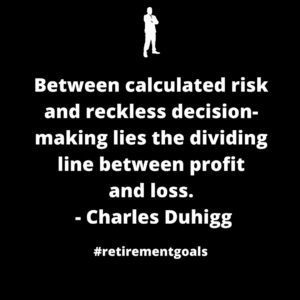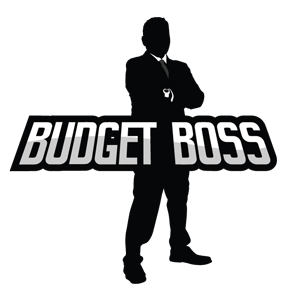Tuesday, February 6, 2018
What should I invest my retirement money in?
The most confusing part about investing is understanding the investments themselves. I have spoken with many clients about what stocks or bonds are and watched their eyes glaze over. This type of education is not given at the public-school levels sadly, yet it might be one of the most important things to understand about your future. The whole purpose of saving for retirement is so that your money can grow and generate an income for you later in life. What should you be invested in to generate solid returns on your money? Well, it depends. Everyone is different when it comes to investing. Some people can handle dips in their investments in hopes of achieving long-term growth. Others like the predictability of slow and steady growth. Today’s post will aim to show you the most common investments for your retirement, so you can see which fits you best. Of course, when deciding what to invest in, make sure you contact a licensed investment representative to help you with your choice. Let’s first look at the various types of investments.
Stocks (also known as shares or equity)
A holder of stock (a shareholder) has a claim to a part of the corporation’s assets and earnings. In other words, a shareholder is an owner of a company. Ownership is determined by the number of shares a person owns relative to the number of outstanding shares. For example, if a company has 1,000 shares of stock outstanding and one person owns 100 shares, that person would own and have a claim to 10% of the company’s assets. Stocks are the foundation of nearly every portfolio. Historically, they have outperformed most other investments over the long run.
50 Companies to Watch: Stocks to Keep an Eye on in 2018 – Bloomberg
Bonds
When companies or other entities need to raise money to finance new projects, maintain ongoing operations, or refinance existing debts, they may issue bonds directly to investors instead of obtaining loans from a bank. The indebted entity (issuer) issues a bond that contractually states the interest rate that will be paid and the time at which the loaned funds (bond principal) must be returned (maturity date). The interest rate, called the coupon rate or payment, is the return that bondholders earn for loaning their funds to the issuer.
Cash Investments
Investors that are looking for a safe investment and looking to preserve their capital will opt for secure investment vehicles, such as cash investments. Money market accounts (MMA’s) and certificates of deposit (CD’s) are examples of cash investments. The choice of which of these cash investments to go for depends on whether the investor wants to lock in a certain yield or whether s/he requires deposit insurance.
Exchange Traded Funds (ETF’s)
An ETF is a type of fund that owns the underlying assets (shares of stock, bonds, oil futures, gold bars, foreign currency, etc.) and divides ownership of those assets into shares. The actual investment vehicle structure (such as a corporation or investment trust) will vary by country, and within one country there can be multiple structures that co-exist. Shareholders do not directly own or have any direct claim to the underlying investments in the fund; rather they indirectly own these assets.
The 10 Best ETFs to Buy for 2018 – USA News
Index Funds
An index fund is a type of mutual fund with a portfolio constructed to match or track the components of a market index, such as the Standard & Poor’s 500 Index (S&P 500). An index mutual fund is said to provide broad market exposure, low operating expenses and low portfolio turnover. These funds adhere to specific rules or standards (e.g. efficient tax management or reducing tracking errors) that stay in place no matter the state of the markets.
Mutual Funds
Mutual funds give small or individual investors access to professionally managed portfolios of equities, bonds and other securities. Each shareholder, therefore, participates proportionally in the gains or losses of the fund. Mutual funds invest in a wide amount of securities, and performance is usually tracked as the change in the total market cap of the fund, derived by the aggregating performance of the underlying investments.
All these types of investments have varying levels of risk associated with them. ETF’s and Mutual Funds can also have a variety of risk levels, depending on what each fund is comprised of. A fund with stocks inside it will be inherently riskier than a fund with bonds inside it. Stocks themselves also range in terms of risk. Blue Chip stocks are shares of well-established companies. Penny stocks are shares of less established companies and therefore have more risk associated with them. Bonds can even be riskier depending on who the issuer is. The key is to have a mix of investments within your RRSP that suit your specific risk tolerance. Everyone will have a different level of risk tolerance, as we all deal with stock market fluctuations differently.
Freedom 55? Is that even possible? – Budget Boss
Most people will have a balance of fixed income investments (bonds) and equities (stocks). Equities can provide growth and fixed income can provide stability. Knowing exactly what your mix is will help you chose the right investment portfolio. Here are some examples of investment portfolios:
Conservative Portfolio
Conservative model portfolios generally allocate a large percent of the total portfolio to lower-risk securities such as fixed-income and money market securities. The main goal of a conservative portfolio is to protect the principal value of your portfolio (the money you originally invested). As such, these models are often referred to as “capital preservation portfolios”. Even if you are very conservative and prefer to avoid the stock market entirely, some exposure can help offset inflation. You could invest the equity portion in high-quality blue-chip companies or an index fund since the goal is not to beat the market.
Moderate Portfolio
Moderately aggressive model portfolios are often referred to as “balanced portfolios” since the asset composition is divided almost equally between fixed-income securities and equities in order to provide a balance of growth and income. Since moderately aggressive portfolios have a higher level of risk than conservative portfolios, this strategy is best for investors with a longer time horizon (generally more than five years), and a medium level of risk tolerance.
Aggressive Portfolio
Aggressive portfolios mainly consist of equities, so their value tends to fluctuate widely. If you have an aggressive portfolio, your main goal is to obtain long-term growth of capital. As such, the strategy of an aggressive portfolio is often called a “capital growth” strategy. To provide some diversification, investors with aggressive portfolios usually add some fixed-income securities.
Of course, within these 3 risk levels, there is some variance, meaning you can be partially aggressive and partially moderate. Now, this all might sound super confusing, but if explained properly even the least savvy investor can understand the basics. Finding out what is right for you is the job of you and your financial advisor. They should have the heart of an educator and be there to guide you through the process. As your knowledge grows, so to will your understanding of why the RRSP is such a great place to park your money for tax-deferred growth. You will be delighted at what can come of a little planning and hard work.
Thanks for tuning in today as RRSP Week continue at Budget Boss. Don’t forget to join us tomorrow as discuss both the RRSP Home Buyer’s Plan and Lifelong Learning Plan. If you would like to understand your risk tolerance, please feel free to contact me at joe@budgetboss.ca. Have a great day Bosses!
“Between calculated risk and reckless decision-making lies the dividing line between profit and loss.” – Charles Duhigg

Email – joe@budgetboss.ca
Follow Budget Boss on – Facebook LinkedIn Twitter Instagram Pinterest Quora


